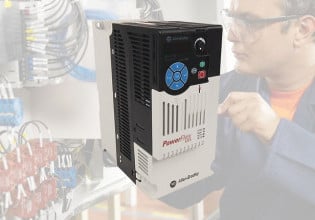Hi,
I have been before asked about Modbus protocol and what is difference of READ & WRITE functions, that is solved.
But still there a vague point in this protocol and it is difference of INPUT & OUTPUT concept.
Regarding INPUTS and OUTPUTS entering and exiting from a RTU or PLC, and different configurations of network, I am not sure a data that is moving between Field devices and RTU/PLC or HMI,could be called INPUT or OUTPUT.
for example : A flow transmitter sending an Analog value to RTU. this value is OUTPUT of Flowmeter but INPUT of RTU. Now if RTU is MASTER and flowmeter is SLAVE, I guess we should use function codes to READ analog outputs, but I am not sure it is correct.
regarding all function codes (including READ/WRITE) are working on Modbus Slave memory, would you please help me if we use READ INPUT functions, which value is read by this function?
Can we consider INPUT, the same data that is coming from field device to RTU's INPUT and read by another Master device?
I have been attached a diagram that show data flow in Modbus network, but I am not sure it is correct understanding INPUT and OUTPUT concept in Modbus.
I would be thankful if someone help me in this case.
Thanks
I have been before asked about Modbus protocol and what is difference of READ & WRITE functions, that is solved.
But still there a vague point in this protocol and it is difference of INPUT & OUTPUT concept.
Regarding INPUTS and OUTPUTS entering and exiting from a RTU or PLC, and different configurations of network, I am not sure a data that is moving between Field devices and RTU/PLC or HMI,could be called INPUT or OUTPUT.
for example : A flow transmitter sending an Analog value to RTU. this value is OUTPUT of Flowmeter but INPUT of RTU. Now if RTU is MASTER and flowmeter is SLAVE, I guess we should use function codes to READ analog outputs, but I am not sure it is correct.
regarding all function codes (including READ/WRITE) are working on Modbus Slave memory, would you please help me if we use READ INPUT functions, which value is read by this function?
Can we consider INPUT, the same data that is coming from field device to RTU's INPUT and read by another Master device?
I have been attached a diagram that show data flow in Modbus network, but I am not sure it is correct understanding INPUT and OUTPUT concept in Modbus.
I would be thankful if someone help me in this case.
Thanks
Attachments
-
164.8 KB Views: 7






